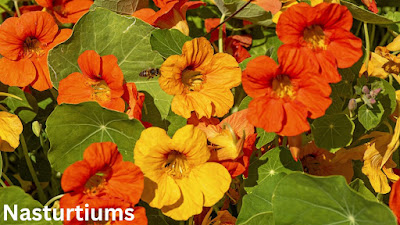What are low-maintenance shrub plants?
Low-maintenance shrub plants are indoor plants that require minimal care and attention. They are perfect for people who are too busy or don't have much expertise in gardening. These plants are known for their ability to thrive in a variety of conditions and can withstand periods of neglect.
crossorigin="anonymous"></script>
Factors to Consider When Choosing Low-Maintenance Shrub Plants
Before selecting low-maintenance shrub plants for your indoor space, it's essential to consider several factors:
Light Requirements:
Some low-maintenance shrub plants thrive in low-light conditions, while others require bright, indirect sunlight.
Watering Needs:
Different plants have varying watering needs. Some plants prefer to be watered sparingly, while others require more frequent watering.
Soil Type:
The type of soil your plant is planted in can affect its growth and health. Make sure there is enough drainage and nutrient-rich soil.
Space Availability:
Select plants that will fit snugly without being too crowded, taking into account the size of your interior area.
crossorigin="anonymous"></script>
Top 10 Low-Maintenance Shrub Plants for Indoors
ZZ Plant (Zamioculcas zamiifolia):
The ZZ plant is known for its glossy, dark green leaves and ability to thrive in low-light conditions. It requires minimal watering and can tolerate neglect.
Snake Plant:
Also known as the mother-in-law's tongue, the snake plant is a hardy plant that can survive in low light and dry conditions. It has tall, upright leaves with a striking appearance.
Pothos:
Pothos is a popular choice for indoor plants due to its trailing vines and heart-shaped leaves. It can withstand sporadic watering and low light levels.
Spider Plant:
The little white flowers and long, arching leaves of spider plants are well-known features. They are easy to care for and can thrive in various light conditions.
Peace Lily:
Peace lilies are known for their elegant white flowers and dark green leaves. They prefer low to medium light and require regular watering.
Rubber Plant:
The rubber plant has large, glossy leaves and can grow to be quite tall. It prefers consistent watering and bright, indirect light.
crossorigin="anonymous"></script>
Chinese Evergreen:
Chinese evergreens have striking foliage with variegated patterns. They do not require frequent watering and low light levels.
Philodendron:
Philodendrons are popular indoor plants with heart-shaped leaves. They don't need much maintenance and may grow in low light.
Dracaena:
Dracaenas are tall, slender plants with long, sword-shaped leaves. They like regular watering and bright, indirect light.
Aloe Vera:
How to Care for Low-Maintenance Shrub Plants
Pests and Diseases:
Pests and diseases can affect low-maintenance shrub plants, but they are usually easy to control with proper care and maintenance. Be sure to monitor your shrub plant for signs of pests and diseases and take appropriate action if necessary.
Light:
Most low-maintenance shrub plants prefer bright, indirect light. However, some can tolerate low-light conditions.
Overwatering and Underwatering:
Overwatering and underwatering are common problems for low-maintenance shrub plants. Be sure to water your shrub plant regularly, but be careful not to overwater it. If you notice signs of overwatering or underwatering, adjust your watering schedule accordingly.
Fertilizing:
During the growing season, apply a once-monthly application of a balanced, water-soluble fertilizer. Remove any dead or yellowing leaves to encourage new growth
Pruning:
Remove any dead or yellowing leaves to encourage new growth.
Repotting:
Repot your plants every 1-2 years to refresh the soil and provide more space for growth.
<script async src="https://pagead2.googlesyndication.com/pagead/js/adsbygoogle.js?client=ca-pub-2985789920568613"
crossorigin="anonymous"></script>Conclusion
Low-maintenance shrub plants are an excellent choice for any garden or landscape. They require minimal care and attention, making them perfect for busy homeowners or those with limited gardening experience. With proper care and maintenance, these plants can thrive in a variety of conditions and provide year-round interest and color to your garden.
<script async src="https://pagead2.googlesyndication.com/pagead/js/adsbygoogle.js?client=ca-pub-1234567890123456" crossorigin="anonymous"></script>
crossorigin="anonymous"></script>
FAQs:
1. What are low-maintenance shrub plants?
Low-maintenance shrub plants are plants that require minimal care and attention, making them perfect for busy homeowners or those with limited gardening experience.
2. What are the benefits of low-maintenance shrub plants?
Some of the benefits of low-maintenance shrub plants include easy care, versatility, year-round interest, and the ability to attract wildlife.
3. What are the common pests and diseases that affect low-maintenance shrub plants?
Common pests include spider mites, aphids, and mealybugs. Diseases such as root rot and powdery mildew can also affect these plants.
4. How Do I Know If My Low-Maintenance Shrub Plant Needs Repotting?
If the roots are growing out of the drainage holes or the plant is becoming root-bound, it's time to repot.
5. How do I plant and care for low-maintenance shrub plants?
To plant and care for low-maintenance shrub plants, choose a planting location that is well-suited to the plant's needs, water and fertilize the plant regularly, and prune and trim the plant as needed.















.jpg)




.jpg)
.jpg)
.jpg)
.jpg)

.jpg)
.jpg)